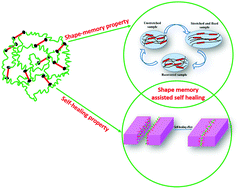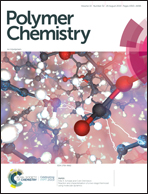The journey of self-healing and shape memory polyurethanes from bench to translational research
Abstract
Research on self-healing materials has been a topic of interest for almost one decade now and it represents a wide interdisciplinary area, exhibiting a large variety of different approaches. Although different types of polymers have been researched upon for this application, synthesizing them and using them for large-scale applications still remain a challenge. Polyurethanes (PU) have emerged as a promising class of polymeric materials in this context due to their ease of synthesis, shape memory properties and the ability to be fabricated on the basis of desired end properties. In this critical review, we have enlisted a comprehensive summary of different approaches that have been used over the past decade to synthesize self-healing PUs. In addition, we have also discussed in detail the “close then heal” and “shape memory assisted self-healing” concept whereby the shape memory properties of PUs can be utilised to bring the damaged parts together to achieve autonomous healing. Such a review will help guide researchers working in this field both from academia and industry.



 Please wait while we load your content...
Please wait while we load your content...